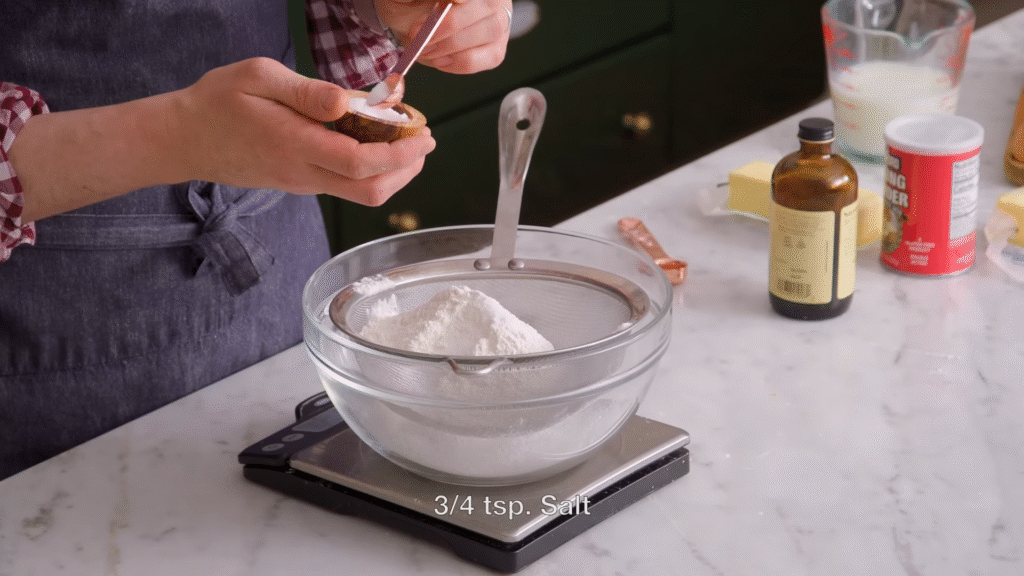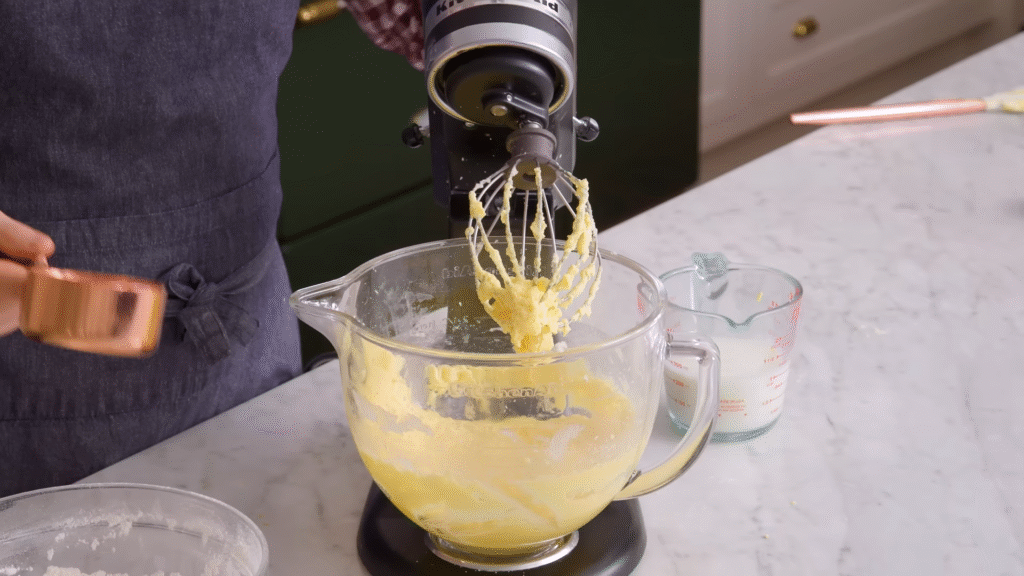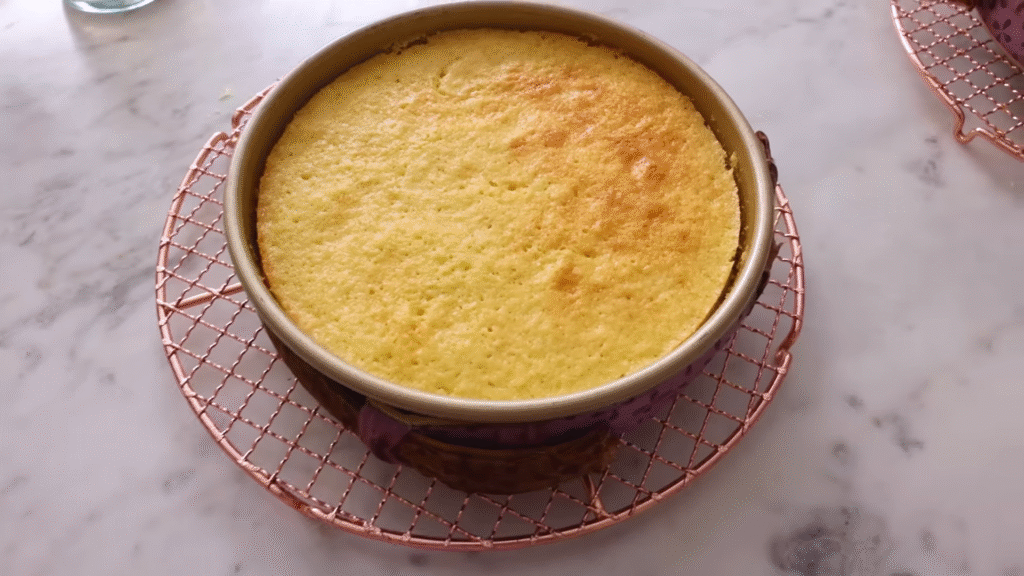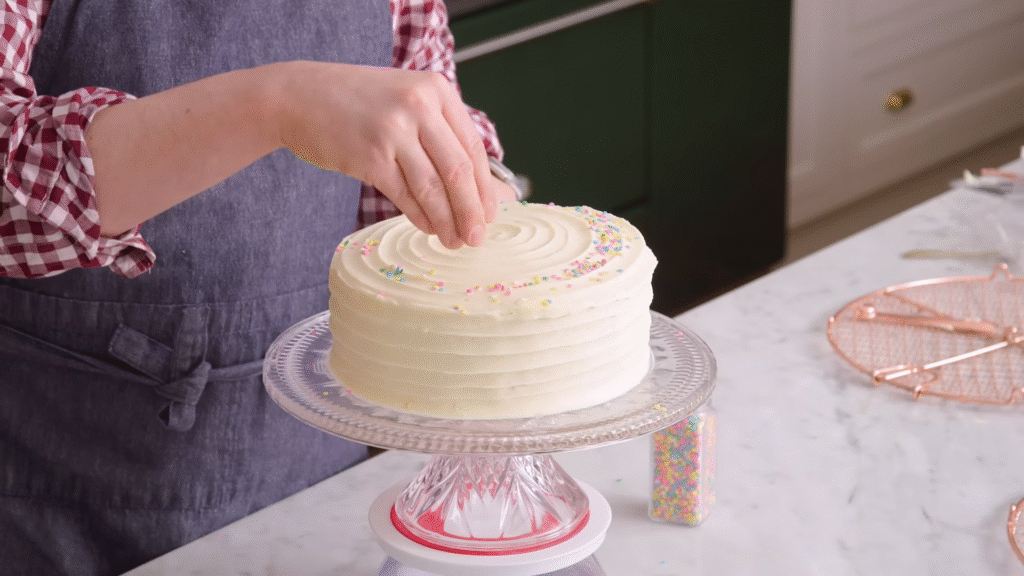I’ll be honest with you—vanilla cake used to bore me. It always felt dry, plain, or just not worth the effort. But one day, I set out on a mission:
to bake a vanilla cake so soft, moist, and flavorful that I would actually crave it. After a lot of trial and error, I finally nailed it. And guess what? You’re about to nail it too.
This is not just another vanilla cake recipe. This is the one that’s going to make you ditch box mixes forever.
Why This Vanilla Cake Is So Good

Most vanilla cakes are either too dry or too sweet. This one? It’s soft, buttery, and stays moist for days. The secret lies in using the right mix of ingredients—real butter, eggs, sugar, and buttermilk (or milk with a splash of vinegar if you don’t have buttermilk). That little swap makes the cake soft and tender every single time.
Ingredients You’ll Need
Here’s what you’ll need to grab before we start:
- 2 ½ cups all-purpose flour
- 2 ½ tsp baking powder
- ½ tsp salt
- ¾ cup unsalted butter (softened)
- 1 ¾ cups sugar
- 4 large eggs (room temperature)
- 1 tbsp vanilla extract (real vanilla if possible)
- 1 cup buttermilk (or milk + 1 tbsp vinegar/lemon juice)
Step-by-Step Instructions
1. Prep Your Oven and Pans
Heat your oven to 350°F (175°C). Grease and flour two 8-inch round cake pans or line them with parchment paper. Trust me, parchment makes life easier.
2. Mix Dry Ingredients
In one bowl, whisk flour, baking powder, and salt. This keeps everything light and lump-free.
3. Cream Butter and Sugar
In another bowl, beat the butter and sugar together until light and fluffy. Don’t rush this step—it gives your cake that soft texture.
4. Add Eggs and Vanilla

Add the eggs one by one. Mix well after each egg. Then stir in the vanilla.
5. Add Dry and Wet Ingredients
Now, add the flour mix and buttermilk little by little, starting and ending with flour. Mix gently. Overmixing makes the cake tough, so stop when it’s just combined.
6. Bake the Cake

Pour the batter into pans and bake for 25–30 minutes. Stick a toothpick in the center—it should come out clean.
7. Cool and Frost
Let the cakes cool before frosting. You can use classic buttercream, whipped cream, or even just dust it with powdered sugar.
Tips to Keep Your Cake Extra Moist
- Use room-temperature eggs and butter.
- Don’t skip the buttermilk—it really makes a difference.
- Don’t overbake! Check your cake at 25 minutes.
- Store the cake wrapped in plastic wrap at room temp—it stays soft for 2–3 days.
Frosting Ideas That Work Perfectly
- Vanilla Buttercream – classic and sweet.
- Chocolate Ganache – for a rich twist.
- Whipped Cream + Fresh Berries – light and refreshing.
- Cream Cheese Frosting – tangy and creamy.
Why You’ll Love Baking This Cake

I love this recipe because it’s simple and forgiving. Even if you’re new to baking, you’ll get amazing results. Plus, it’s one of those cakes that works for any occasion—birthdays, holidays, or just because you’re craving cake.
I’m telling you, once you try this, you’ll never want store-bought vanilla cake again.
FAQs About Moist Vanilla Cake
Q: Can I make this recipe into cupcakes?
Yes! Bake them at the same temperature for 18–20 minutes.
Q: Can I use oil instead of butter?
Yes, but butter gives better flavor. If you swap, use the same amount of oil.
Q: How do I make this cake ahead of time?
Bake, cool, wrap tightly in plastic wrap, and store in the fridge up to 3 days. Or freeze for up to 2 months.
Q: Can I double this recipe for a bigger cake?
Absolutely! Just make sure to use larger pans and adjust the bake time.
Q: My cake turned out dry. What went wrong?
Most likely it was overbaked. Always check with a toothpick a few minutes before the suggested bake time.
